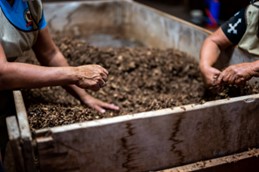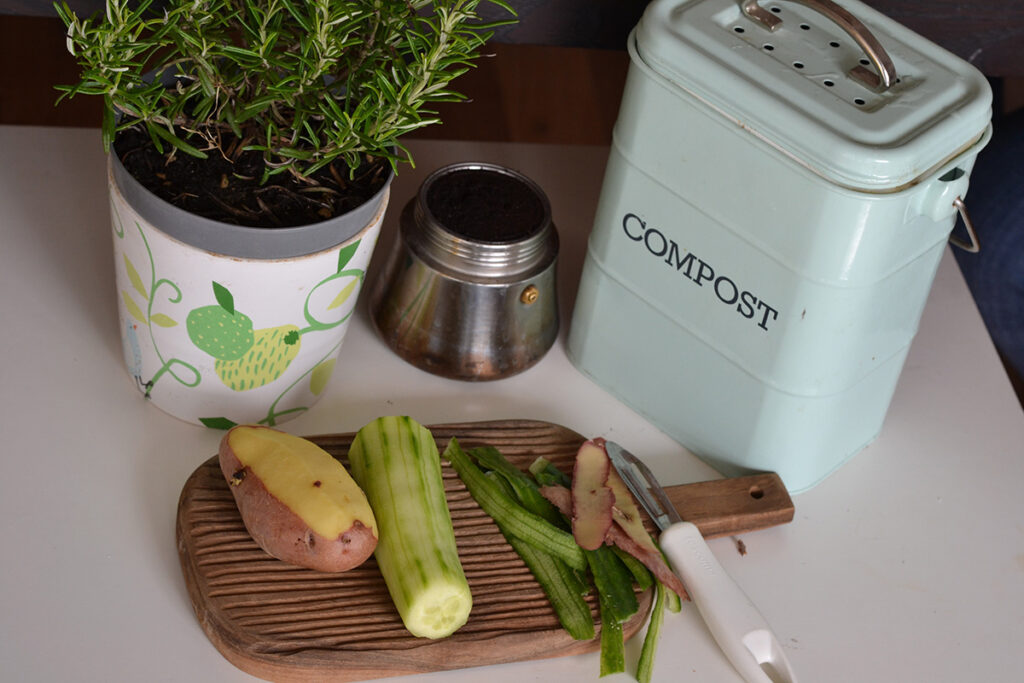Compost
WASTE MANAGEMENT
Introduction
In circular economy there is a mechanism action that eases the decomposing of organic material in an oxygenated environment and consequently, it constitutes a nutrient rich fertilizer, and a soil amendment. That mechanism/process is called composting. A plethora of material can be composted, including fruits and vegetables, eggshells, coffee grounds and filters, nut shells, tea bags, shredded newspapers, cardboards, etc.
Description
Everyone can compost, weather municipality professionals or households, as long as they have browns- dead leaves, branches and twigs, greens- vegetable and fruit scraps, coffee grounds, grass clipping, and water, all in equal amounts. The browns release carbon, the greens release nitrogen and the water provides the necessary moisture in order to break the organic material with composting. For indoor composting, it is possible to buy a composting bin from a hardware store or a gardening supplies store and afterwards be careful of the materials they through inside so that no pests or rodents are attracted to the pile and the pile has no bad odour. Indoor composting takes up to 2 and 5 weeks. Backyard composting includes finding a place in the garden that has plenty of shade and is dry to set up the composting pile. Then greens and browns are added to the mix, are moisturized if dry, and cut to smaller pieces if big. The compost pile is complete once grass clippings and vegetables have been added. Backyard composting can take between 2 months to 2 years. Four different types of composting: Vermicomposting which is the process of composting in a confined container with the aid of worms that disintegrate the compost. Aerated (turned) windrow composting: the process of composting in windrows, which are huddled rows periodically aerated either manually or by mechanical pile turning. Aerated static pile composting: a big stack is aerated with ventilation ducting and/or materials of organic bulking for the composting process. In-vessel composting: the procedure of composting in a big, confined vessel that oversees the five criteria necessary for composting.
It has been estimated that less than 40% of organic waste is composted in OECD countries, which proves that at least 58 million tonnes of materials that could be recovered are lost annually.

Main Features
When composting there are five criteria to take into account:
- Nutrient balance
- Particle size
- Moisture
- Oxygen
- Temperature

Advantages and challenges
+ Minimal environmental effects. Composting of organic matters halts the production of methane and leachate formulation in landfills and reduces greenhouse gas emissions.
+ Regenerates poor soils by producing bacteria and fungi, which are useful microorganisms that decompose organic materials to create humus. The biodiversity of the soil is also augmented.
+ Provides water retention, halting the clogging of waterways with waste products.
+ A natural organic fertilizer, meaning no need for chemicals in planting.
+ Supresses plant diseases and pests.
+ Anyone can compost in urban areas by using indoor composting bins.
– The release of gases that are harmful for the environment, especially methane which traps heat and affects the global warming in the case of anaerobic composting.
– Reports of low nutrient and agronomic value. There is a need to add nutrient-rich substrates.
– Collecting and attending to the waste piles is a time-consuming process.


